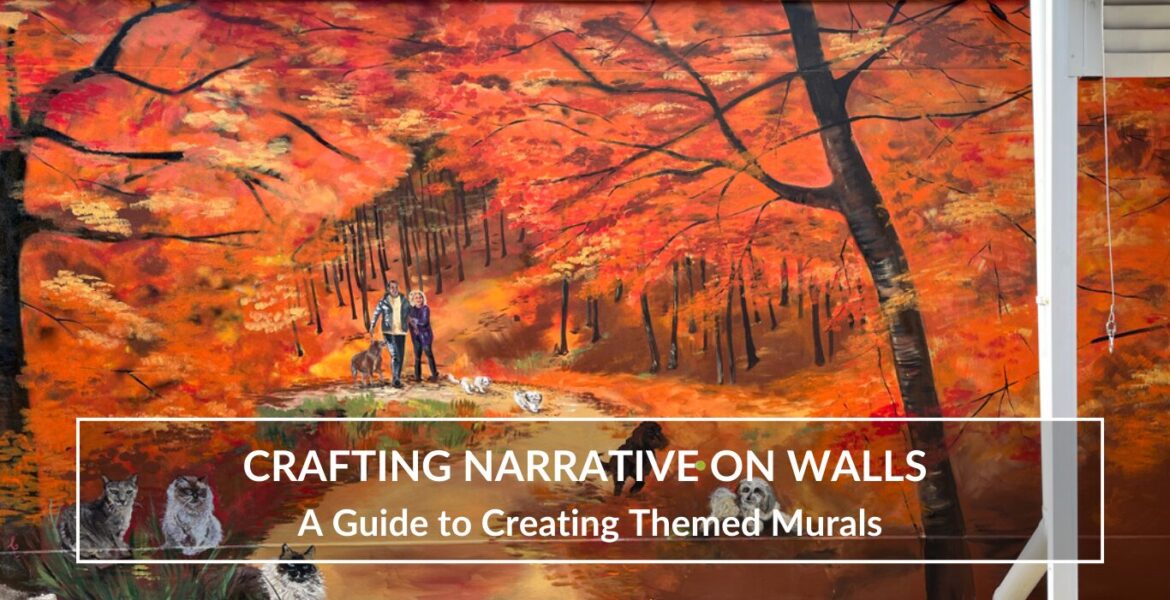
Crafting Narrative on Walls: A Guide to Creating Themed Mural
Introduction:
Murals have the power to transform spaces, tell stories, and evoke emotions. One compelling way to enhance the impact of a mural is by infusing it with a cohesive theme. Themed murals not only captivate viewers but also provide artists with a focused and inspiring framework for their creative expression. In this article, we explore the art of creating themed murals and the unique opportunities and challenges they present.
Choosing a Theme:
Selecting the right theme is a crucial first step in creating a themed mural. Consider the context of the space, the audience, and the message you wish to convey. Themes can range from historical narratives and cultural representations to abstract concepts or environmental messages. Here are some tips for choosing a theme:
- Relevance: Ensure that the chosen theme aligns with the purpose of the mural and resonates with the community or audience in the given space.
- Inspiration: Draw inspiration from the surroundings, local culture, or the building’s history. A well-chosen theme can enhance the mural’s connection to its environment.
- Collaboration: If the mural is a community project, involve the local community in the theme selection process. This fosters a sense of ownership and connection among residents.
Planning and Sketching:
Once the theme is established, meticulous planning and sketching are essential to bring the vision to life. Consider the following aspects during the planning phase:
- Storyboarding: Create a storyboard or sketch that outlines the narrative flow of the mural. This helps in organizing ideas and ensuring a cohesive visual story.
- Colour Palette: Select a colour palette that complements the theme. Colours evoke emotions and can enhance the storytelling aspect of the mural. Consider the psychological impact of each colour choice.
- Scale and Proportion: Pay attention to the scale and proportion of different elements within the mural. This ensures a harmonious composition that effectively communicates the chosen theme.
Painting Techniques:
Themed murals can be painted using various techniques, and the choice depends on the artist’s style, the mural’s location, and the desired visual impact. Common techniques include:
- Brush Painting: Traditional brush painting allows for intricate details and fine lines, making it suitable for conveying nuanced themes and stories.
- Spray Painting: Spray painting is ideal for creating bold and vibrant murals with a modern, urban feel. It’s well-suited for themes related to contemporary culture or street art.
- Mosaic or Collage: Incorporate mosaic elements or collage techniques to add texture and depth to the mural. This is particularly effective for themes that involve diversity and interconnectedness.
- Interactive Elements: Consider incorporating interactive elements into the mural, such as hidden details, augmented reality components, or areas where viewers can contribute to the artwork.
Community Engagement:
Themed murals often resonate more deeply when the community is involved in the creative process. Consider hosting workshops, engaging local artists, or inviting community members to contribute ideas or participate in the painting process. This collaborative approach not only enriches the mural but also fosters a sense of pride and connection within the community.
Themed murals have the power to transcend mere visual aesthetics, becoming immersive experiences that tell stories and convey meaningful messages. By carefully selecting a theme, planning meticulously, employing appropriate execution techniques, and engaging the community, artists can create murals that not only beautify spaces but also leave a lasting impact on those who encounter them. As the brush meets the wall, themed murals become not just artworks but powerful narratives that enrich the tapestry of our shared environments.
